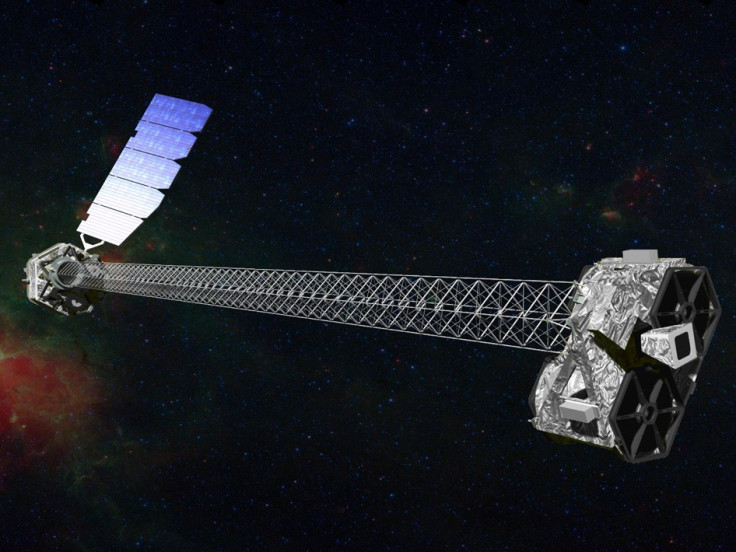Nasa's NuSTAR Telescope Successfully Launched [VIDEO]

Nasa scientists have successfully launched its Nuclear Spectroscopic Telescope Array (NuSTAR) from Kwajalein Atoll in the central Pacific Ocean at 9 am PDT. They claim that the telescope will unveil secrets of black holes and other exotic objects.
NuSTAR was launched by an aircraft, L-1011 Stargazer, which is operated by Orbital Sciences Corporation, Dulles, Va. NuSTAR was hanging atop Orbital's Pegasus XL rocket, both of which were strapped to the belly of the Stargazer plane.
Scientists received first signal from the spacecraft at 12:14 pm EDT (9:14 am PDT). These signals were detected through Nasa's Tracking and Data Relay Satellite System.
"NuSTAR spread its solar panels to charge the spacecraft battery and then reported back to earth of its good health," said Yunjin Kim, project manager at Nasa's Jet Propulsion Laboratory in Pasadena, in a statement. "We are checking out the spacecraft now and are excited to tune into the high-energy X-ray sky."
NuSTAR telescope has a 33-foot (10-metre) mast, which was folded up in a small canister during launch. In about seven days, engineers will command the mast to extend, enabling the telescope to focus properly. About 23 days later, science operations are scheduled to begin.
Nasa scientists claim that NuSTAR's unique state-of-art technology will not only study black holes but will also investigate exploding stars and our sun's fiery atmosphere, looking for clues as to how it is heated.
"We all eagerly await the launch of this novel X-ray observatory," said Paul Hertz, Director at the Nasa's Astrophysics Division, in a statement. "With its unprecedented spatial and spectral resolution to the previously poorly explored hard X-ray region of the electromagnetic spectrum, NuSTAR will open a new window on the universe and will provide complementary data to Nasa's larger missions including Fermi, Chandra, Hubble and Spitzer."
NuSTAR has unique detection device which can detect the highest energy X-ray light from the cosmos. Scientists claim that usually high energy X rays are very hard to detect because the rays reflect off from the satellite mirrors. However, NuSTAR is designed to solve this problem. Engineers have used nested shells of mirrors that do not reflect the X rays. These mirrors are moulded from ultra-thin glass similar to that found in laptop screens and glazed with even thinner layers of reflective coating.
Scientists claim the observatory can see through gas and dust to reveal black holes lurking in our Milky Way galaxy, as well as those hidden in the hearts of faraway galaxies because of these unique design and high-tech detectors.
"NuSTAR will help us find the most elusive and most energetic black holes, to help us understand the structure of the universe," said Fiona Harrison, the mission's principal investigator at the California Institute of Technology in Pasadena.
Scientists claim that in the near future the data retrieved from the NuSTAR telescope and data retrieved from several other telescopes will help them solve fundamental cosmic mysteries.
"We're all really excited to see the fruition of our work begin its mission in space," Kim added.
Watch the video
© Copyright IBTimes 2025. All rights reserved.






















